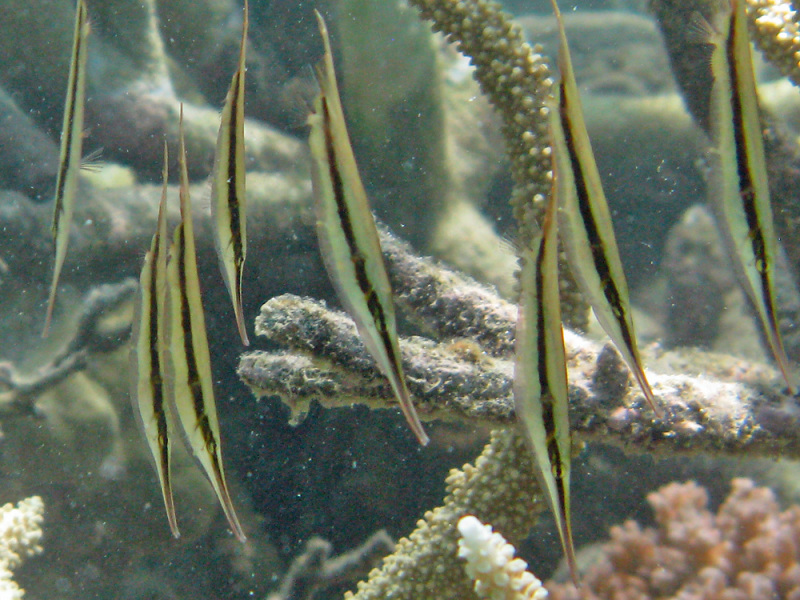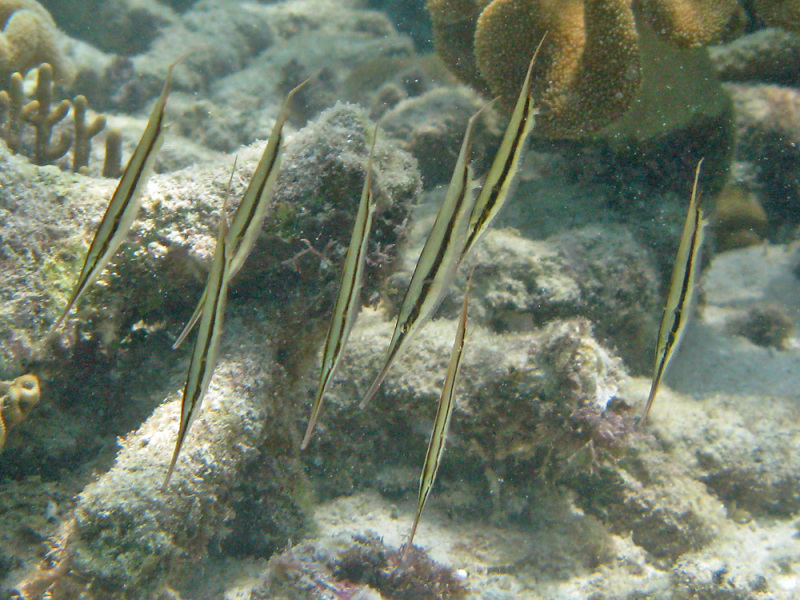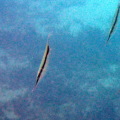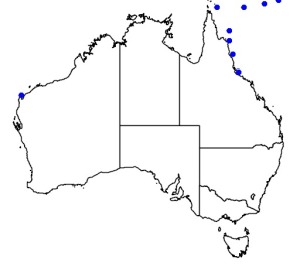�
�
�
���
Aeoliscus strigatus
Razorfish
Kingdom
Animalia
Phylum
Chordata
Class
Actinopterygii
Order
Gasterosteiformes
Family
Centriscidae
Genus
Aeoliscus
Species
Aeoliscus strigatus
Colours
Distinguishing features
Extremely compressed laterally with a long thin snout and a wide brown stripe ��along the side. Head-down living position, usually in ��small schools. The ��first dorsal spine (uppermost part of the animal in normal position) ��is hinged, allowing the end of the spine to move.
Size
- Up to 15 cm (Total length)
Depth range
- From 2 m to 42 m
Synonyms
Interesting facts
- These fish belong to a rare and diverse order. They have small hovering fins that make them float through the water like Ghosts. Their skeleton has a series of rings that circle the entire length of the body like the spines of a Dragon or the armour of a medieval war Horse. Their jaws have fused together to make a Pipe or a Trumpet and some float upside down like drifting seagrass blades or Razors.
Distribution
Distribution and habitat preferences
Form schools among the spines of Diadema or staghorn corals, and feed on minute crustaceans in the zooplankton. (Fishbase)
Web resources
References
References that assist with identification
- Allen, G., R. Steene, P. Humann and N. Deloach (2003). Reef fish identification: Tropical Pacific New World Publications Inc., Jacksonville, FL, USA.
Other references
- Caley, M.J. (1991). Mechanisms of coexistence in communities of coral-reef fishes, Ph.D. thesis, University of Sydney. LIRS catalog number 307.
- Caley, M.J. (1995). Reef fish community structure and dynamics: in interaction between local and larger-scale processes? Marine Ecology Progress Series, 129: 19-29. LIRS catalog number 448.
- View all references







